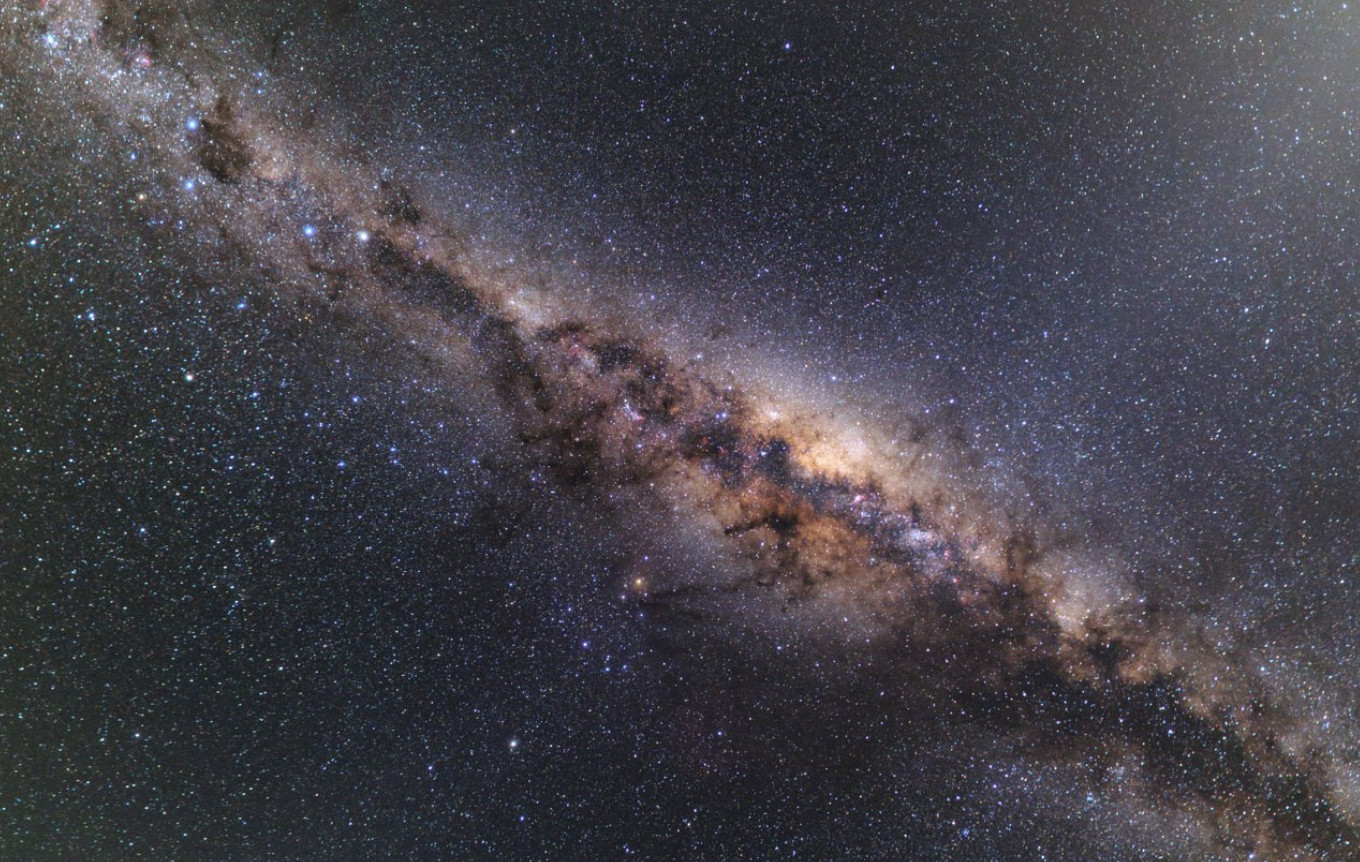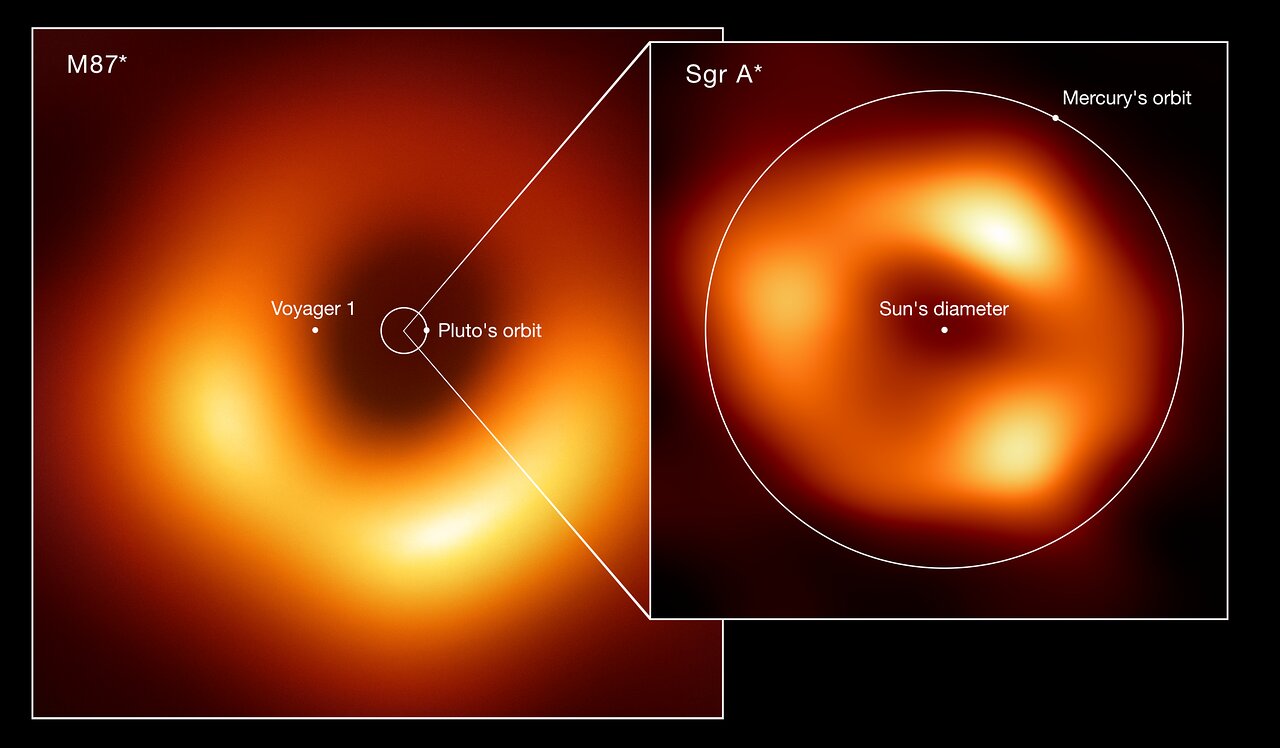
Sciences & Technology
Putting the Universe under the telescope

Scientists have captured the first direct images of a giant black hole at the centre of the Milky Way - but what does it tell us?
Published 13 May 2022
Radio astronomers have revealed the first picture of a giant black hole at the centre of our galaxy.
Known as Sagittarius A* or Sgr A*, it sits about 27,000 light-years from the Sun and is around 6.5 billion times more massive than the Sun.

The image shows a bright ring formed as light bends in the intense gravity around a black hole. The research, by the Event Horizon Telescope (EHT) collaboration, was published in six papers in the Astrophysical Journal Letters and used a network of telescopes from Antarctica to Greenland to take the picture.
We asked cosmologist and astrophysicist Associate Professor Christian Reichardt from the School of Physics to explain why what we’re seeing for the first time is so important.

Sciences & Technology
Putting the Universe under the telescope
Astronomers have taken an image of the super massive black hole lurking in the centre of the Milky Way, named Sagittarius A* (as you might guess from the name, it’s part of the constellation Sagittarius, also known as The Archer). This wasn’t easy though as, despite their mass, black holes are tiny and as the name implies – dark.
What the astronomers have actually seen is a ring of gas and matter orbiting the black hole. This gas is heated up to blazingly hot temperatures as it falls inward – the bright spots in the image reaching a trillion degrees.
All of this matter will eventually fall onto the black hole, making it that much more massive.

But taking the picture was challenging.
Firstly, one has to peer through all the other stuff between us and the centre of the Milky Way.
Secondly, it’s small. Astronomers had to use a telescope with radio sources spanning the Earth to image the ring, using a technique called very long baseline interferometry to combine data from telescopes spread across the planet from the South Pole to Greenland.

Sciences & Technology
Four important things that this picture tells us
Lastly, the hot gas is spiralling in around the black hole at very high speeds. Astronomers needed to stare at the black hole for 10 nights to see it, but the gas was moving on timescales of minutes to hours.
Astronomers handled this effectively by taking thousands of short exposures and then combining them with the orbital motion taken out.
This is the first time we’ve seen the black hole in the centre of our galaxy. And only the second time we’ve directly imaged any black hole (in 2019, the same telescope took a picture of a much larger black hole in a nearby galaxy called M87*). We already had a pretty good idea that a massive black hole, about four million times more massive than the Sun, lurked in the centre of the Milky Way.

You may remember the 2020 Nobel Prize was co-awarded to Andrea Ghez and Reinhard Genzel for the “for the discovery of a supermassive compact object at the centre of our galaxy”.
But the wording was carefully chosen to avoid saying black hole since we hadn’t seen it. Now we have. These new observations also let us test whether gravity works the way we think it should in the extreme conditions near a black hole. And it seems to.

Sciences & Technology
Supermassive black hole controls star birth
The image of the orbiting gas and matter falling into the black hole match up with the predictions of Einstein’s theory of General Relativity. It looks like General Relativity works for predicting how space-time is warped near a black hole.
This image confirms that the Milky Way hosts a super massive black hole. This puts the Milky Way in good company, as we believe these black holes live at the centre of most galaxies.
It confirms that our black hole is the mass we had expected from looking at the orbits of stars in its vicinity, and that there isn’t a non-black-hole explanation for the earlier observations.

Black holes are cool and some of the most extreme objects in the Universe. They offer unique windows in the strong gravity regime and test our understanding of how gravity works. Black holes are also believed to play a crucial role in how galaxies grow and create stars.
We believe that essentially all galaxies have a super massive black hole like Sagittarius A* at their centre. The infall of matter onto this black hole can release phenomenal amounts of energy, enough to actually change the dynamics of clumps of gas throughout the entire galaxy and regulate how quickly stars can form.
Banner: Event Horizon Telescope Collaboration